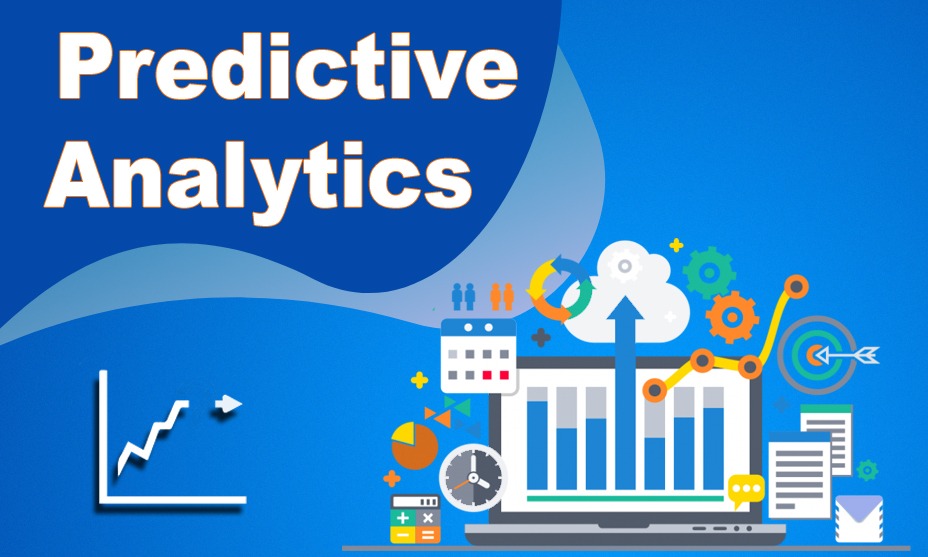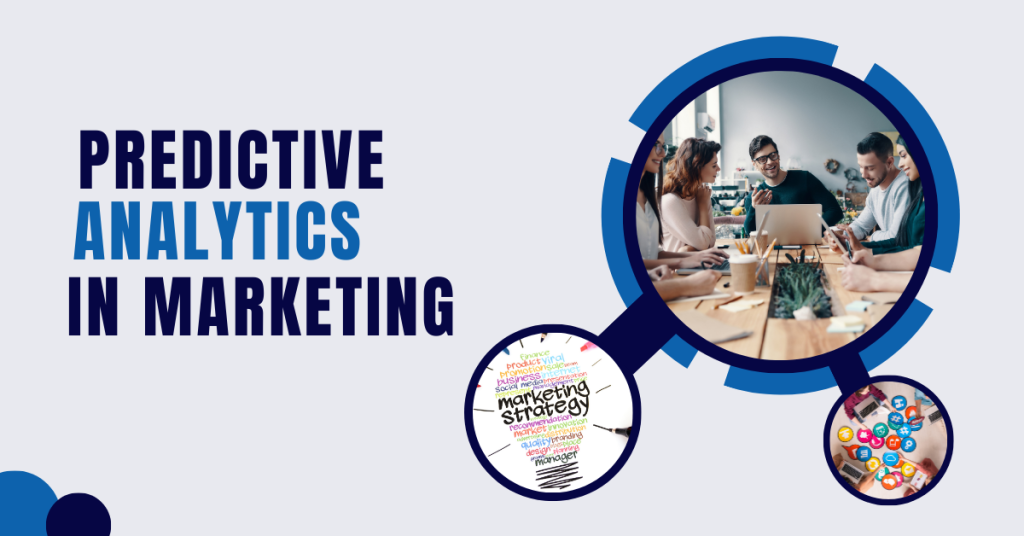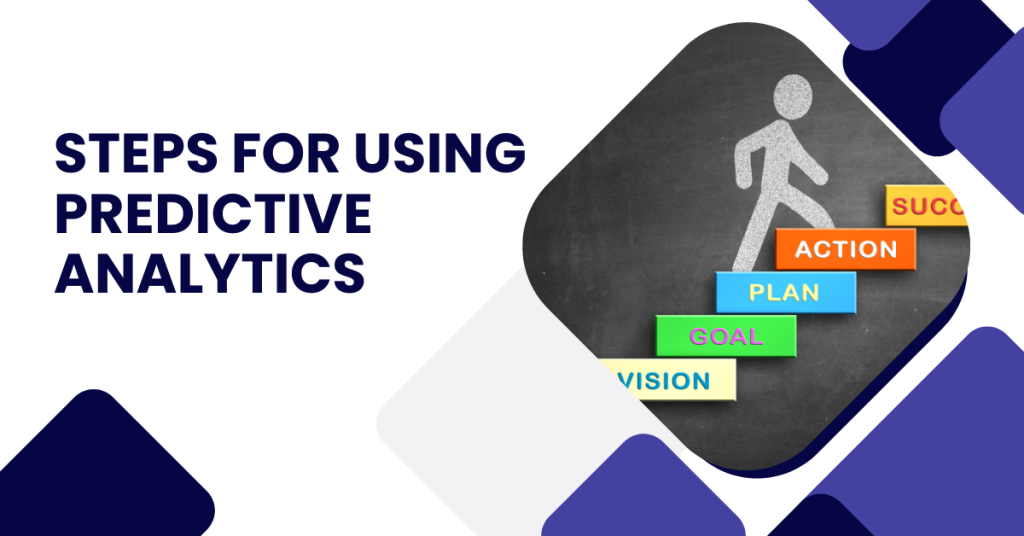
Predictive analytics is a powerful tool that can help businesses gain insights into future trends and customer behavior. It can forecast future outcomes with a high degree of accuracy by leveraging historical data and statistical algorithms. In the context of marketing, you can also use these tools to optimize marketing strategies, personalize content, and target specific audiences. In this article, we will explore the various ways in which predictive analytics can be used in marketing and provide some tips on how to incorporate it into your marketing strategy.
What is Predictive Analytics?
Predictive analytics is using data and machine learning and AI technologies algorithms to identify patterns in past behavior or other data points, then use those patterns to predict future trends or events. It has become increasingly popular in recent years as businesses and organizations look to make quicker, more informed decisions. By analyzing large datasets and using sophisticated algorithms, it can provide insights that would have otherwise been difficult to uncover. It plays an increasingly important role in the modern business landscape by helping companies better understand customer behavior, optimize operations and make accurate predictions about future events.
Benefits of Using Predictive Analytics in Marketing Strategy:
There are several benefits to using predictive analytics in marketing, including:
Improved targeting
Predictive analytics allows you to identify specific customer segments and create targeted marketing campaigns that are more likely to resonate with them. That can help you increase your conversion rates and ROI.
Better customer experience
Using predictive analytics to understand customer behavior and preferences, you can create more personalized experiences that are tailored to their needs. That can help you build stronger relationships with your customers and increase customer loyalty.
Increased efficiency
You can save time and resources while still achieving better results by automating many aspects of your marketing process using an analytics tool.
Competitive advantage
You can differentiate your brand and gain a competitive advantage in your market by using predictive analytics to stay ahead of the competition.
Examples of Predictive Analytics in Marketing:
There are many examples of how predictive analytics can be used in marketing. Here are a few:
Personalized product recommendations
Companies like Amazon and Netflix use predictive analytics to recommend products and content to their customers based on their past behavior and data analysis. Using machine learning algorithms to analyze customer behavior, they can make personalized product recommendations that are more likely to result in a purchase.
Lead scoring
Predictive analytics can be used to score leads based on their likelihood of converting into customers. By analyzing historical data and identifying common characteristics of successful conversions, companies can create a scoring system that helps them prioritize leads and focus their marketing efforts on the most promising prospects.
Churn prediction
Predictive analytics can be used to predict when a customer is likely to churn (i.e., stop using a product or service). By analyzing historical data and identifying common patterns among customers who have churned in the past, companies can take proactive measures to prevent churns, such as offering discounts or personalized offers.
Price optimization
Predictive analytics can be used to optimize pricing strategies. Companies can adjust their prices to maximize revenue and profitability after analyzing customer behavior and identifying price sensitivities.
Customer segmentation
You can also analytics to segment customers based on their behavior and preferences. By identifying common patterns among different customer segments, companies can create targeted marketing campaigns that are more likely to resonate with each group.
Challenges of Using Predictive Analytics in Marketing:

While there are many benefits to using predictive analytics in marketing, there are also some challenges to consider. Here are a few:
Data quality
Predictive analytics relies on large amounts of high-quality data to be effective. If the data is incomplete or inaccurate, the predictions may not be reliable.
Data privacy
Collecting and analyzing customer data raises privacy concerns. It’s dominant to ensure that you are collecting data in a way that is transparent and respects customers’ privacy.
Complexity
Predictive analytics can be complex and requires data analysis and machine learning expertise. It may be necessary to hire data scientists or other experts to help with this process.
Cost
Predictive analytics tools and expertise can be expensive, which may be a barrier for small businesses with limited resources.
Steps for Using Predictive Analytics:

Here are some Steps to using Predictive Analytics in your Marketing Strategy:
Step 1: Define Your Business Goals and Objectives
Before you start using predictive analytics in your marketing strategy, it’s essential to define your business goals and objectives. What are you trying to achieve with your marketing efforts? Are you looking to increase brand awareness, generate more leads, or increase sales? Once you clearly understand your goals and objectives, you can use analytics to develop strategies that will help you achieve them.
Step 2: Gather Data
The next step is to gather data. Predictive analysis requires large amounts of data to be effective, so you need to collect as much data as possible about your customers, including demographic information, purchase history, and behavioral data. You can gather this data through a variety of sources, including customer surveys, website analytics, and social media monitoring tools.
Step 3: Clean and Organize your Data
Once you have gathered your data, the next step is to clean and organize it. This involves removing any duplicate or irrelevant data, correcting any errors, and ensuring that the data is in a format that can be easily analyzed. You may need to use data cleaning and preparation tools to help you with this process.
Step 4: Analyze your Data
The next step is to analyze your data using predictive tools. There are many different predictive tools available, ranging from simple data visualization tools to complex machine learning algorithms. You can identify patterns and trends in your data to make predictions about future customer behavior.
Step 5: Develop your Marketing Strategy
You can use this information to develop your marketing strategy, Once you have analyzed your data and made predictions about future customer behavior. That could involve creating targeted marketing campaigns that are tailored to specific customer segments, or it could include adjusting your pricing or product offerings to better meet customer needs.
Step 6: Monitor and Refine your Strategy
It’s dominant to monitor and refine your marketing strategy over time. Predictive analytics is not a one-time process; it’s an ongoing process that requires continuous monitoring and refinement. By regularly analyzing your data and making adjustments to your marketing strategy, you can ensure that you are always staying ahead of the competition and meeting the evolving needs of your customers.
Conclusion
Using predictive analytics in your marketing strategy can help you gain a competitive advantage by providing insights into customer behavior and preferences. You can gather and analyze data to make predictions about future customer behavior and create more targeted and effective marketing campaigns after following predictive steps. While there are challenges to consider, the benefits of using predictive measuring in marketing make it a valuable tool for any business looking to stay ahead of the competition.




